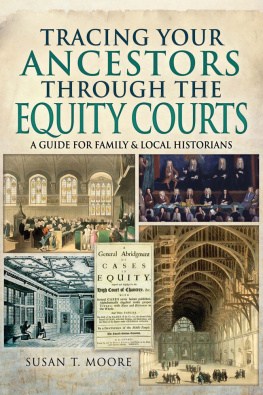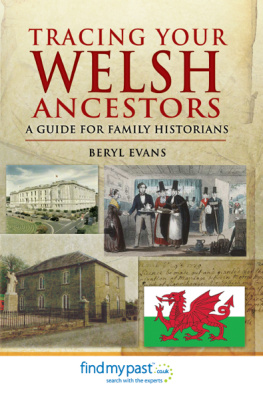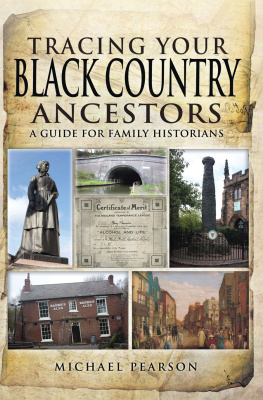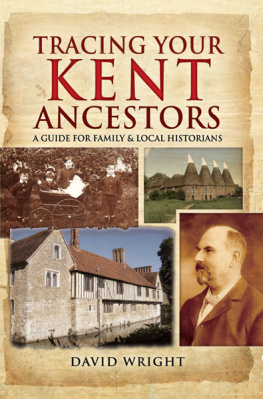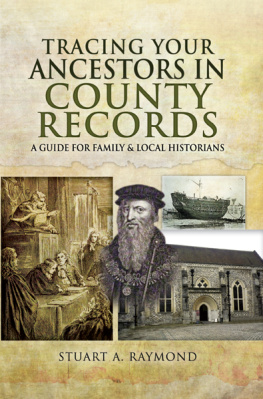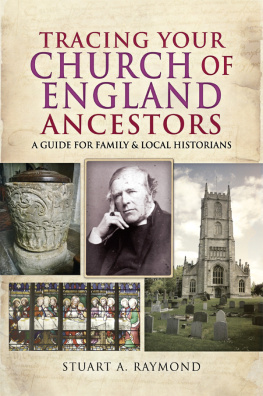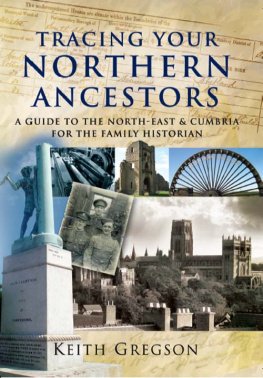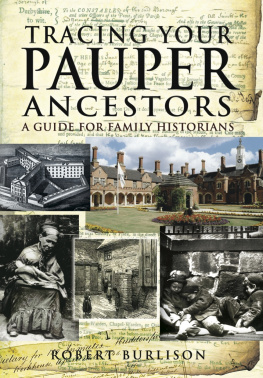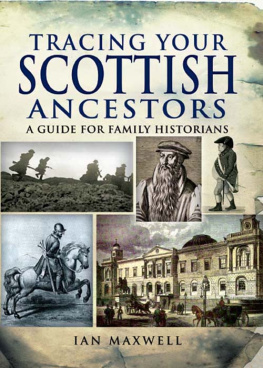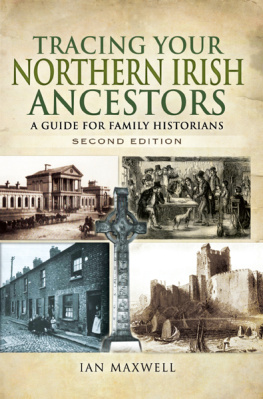
TRACING YOUR
ANCESTORS
THROUGH THE
EQUITY COURTS
FAMILY HISTORY FROM PEN & SWORD
Tracing Secret Service Ancestors
Tracing Your Air Force Ancestors
Tracing Your Ancestors
Tracing Your Ancestors from 1066 to 1837
Tracing Your Ancestors Through Death Records
Tracing Your Ancestors Through Family Photographs
Tracing Your Ancestors Using the Census
Tracing Your Ancestors Childhood
Tracing Your Ancestors Parish Records
Tracing Your Aristocratic Ancestors
Tracing Your Army Ancestors 2nd Edition
Tracing Your Birmingham Ancestors
Tracing Your Black Country Ancestors
Tracing Your British Indian Ancestors
Tracing Your Canal Ancestors
Tracing Your Channel Islands Ancestors
Tracing Your Coalmining Ancestors
Tracing Your Criminal Ancestors
Tracing Your East Anglian Ancestors
Tracing Your East End Ancestors
Tracing Your Edinburgh Ancestors
Tracing Your First World War Ancestors
Tracing Your Great War Ancestors: The Gallipoli Campaign
Tracing Your Great War Ancestors: The Somme
Tracing Your Great War Ancestors: Ypres
Tracing Your Huguenot Ancestors
Tracing Your Jewish Ancestors
Tracing Your Labour Movement Ancestors
Tracing Your Lancashire Ancestors
Tracing Your Leeds Ancestors
Tracing Your Legal Ancestors
Tracing Your Liverpool Ancestors
Tracing Your London Ancestors
Tracing Your Medical Ancestors
Tracing Your Merchant Navy Ancestors
Tracing Your Naval Ancestors
Tracing Your Northern Ancestors
Tracing Your Pauper Ancestors
Tracing Your Police Ancestors
Tracing Your Prisoner of War Ancestors: The First World War
Tracing Your Railway Ancestors
Tracing Your Royal Marine Ancestors
Tracing Your Rural Ancestors
Tracing Your Scottish Ancestors
Tracing Your Second World War Ancestors
Tracing Your Servant Ancestors
Tracing Your Service Women Ancestors
Tracing Your Shipbuilding Ancestors
Tracing Your Tank Ancestors
Tracing Your Textile Ancestors
Tracing Your Trade and Craftsmen Ancestors
Tracing Your Welsh Ancestors
Tracing Your West Country Ancestors
Tracing Your Yorkshire Ancestors
TRACING YOUR
ANCESTORS
THROUGH THE
EQUITY COURTS
A Guide for Family and Local Historians
Susan T. Moore
First published in Great Britain in 2017
PEN & SWORD FAMILY HISTORY
an imprint of
Pen & Sword Books Ltd
47 Church Street
Barnsley
South Yorkshire
S70 2AS
Copyright Susan T. Moore, 2017
ISBN 978 1 47389 166 1
eISBN 978 1 47389 168 5
Mobi ISBN 978 1 47389 167 8
The right of Susan T. Moore to be identified as Author of the Work has been asserted by her in accordance with the Copyright, Designs and Patents Act 1988.
A CIP catalogue record for this book is available from the British Library.
All rights reserved. No part of this book may be reproduced or transmitted in any form or by any means, electronic or mechanical including photocopying, recording or by any information storage and retrieval system, without permission from the Publisher in writing.
Pen & Sword Books Ltd incorporates the imprints of Pen & Sword Archaeology, Atlas, Aviation, Battleground, Discovery, Family History, History, Maritime, Military, Naval, Politics, Railways, Select, Social History, Transport, True Crime, Claymore Press, Frontline Books, Leo Cooper, Praetorian Press, Remember When, Seaforth Publishing and Wharncliffe.
For a complete list of Pen & Sword titles please contact
PEN & SWORD BOOKS LTD
47 Church Street, Barnsley, South Yorkshire, S70 2AS, England
E-mail:
Website: www.pen-and-sword.co.uk
LIST OF ILLUSTRATIONS
1. Henry Brougham, 17781868, Lord High Chancellor. (Lincolns Inn)
2. John Scott, Lord High Chancellor of England, 18016, by William Cowen.
3. Reports of cases in the Court of Exchequer.
4. Layout of courts of equity in Westminster Hall.
5. An example of palaeography from Court of Star Chamber. (TNA)
6. The site of Furnivals Inn. (authors collection)
7. Barnards Inn. (authors collection)
8. The White Hart, Wimborne.
9. Family in Taunton and Cornwall, C 6/357/16. (TNA)
10. A line drawing of Holbrook House. (Darren McGinley)
11. An Exhibit including appointment of attorney for Harvard. (TNA)
12. A typical Bill of Complaint, C 3/207/57. (TNA)
13. A typical Answer, C 3/207/57. (TNA)
14. A typical Deposition, STAC 3/80/1. (TNA)
15. A typical volume of Orders and Decrees. (authors collection)
16. Doodling in a calendar of Orders and Decrees, IND 1/1432. (TNA)
17. A typical Masters Report, Seamer v Johnson, C 38/262. (TNA)
18. Typical accounts in a Masters Report, C 38/262. (TNA)
19. A typical box of Masters Exhibits, C 110/80. (TNA)
20. A pedigree from a box of Masters Exhibits, C 103/18. (TNA)
21. Detail from a pedigree from a box of Masters Exhibits, C 103/18. (TNA)
22. Extract from a slave list in a box of Masters Exhibits, C 108/174. (TNA)
23. A page from IND 1 list for C 38. (TNA)
24. A typical page from a calendar of Chancery Orders and Decrees, 1655. (TNA)
25. A typical page from a calendar of Chancery Masters Reports. (TNA)
26. A typical Discovery entry from Exchequer Depositions by Composition, E 134. (TNA)
27. A typical calendar of Depositions from Duchy of Lancaster. (TNA)
28. A London Gazette supplement showing Chancery cases. (TNA)
29. The London Gazette showing Chancery cases. (TNA)
30. A map of Smallbrook Farm.
31. Schedule of rents from Chancery Depositions, C 22/976/9. (TNA)
32. An Order relating to the Gifford case, C33/283. (TNA)
33. Depositions relating to Roundhill Manor, STAC 3/3/80. (TNA)
34. A plan showing the proximity of places to Jane Austens house. (authors collection)
35. Ashe Rectory House. (authors collection)
36. A map showing the location of lands held by the Lefroy family. (authors collection)
37. The location of lands held by the Lefroy family showing names of individual holdings. (authors collection)
38. The Lefroy family tree. (authors collection)
39. The interior of Crondall church. (authors collection)
40. A modern road name reflecting the Lefroy connection with Crondall. (authors collection)
PREFACE
The records of the courts of equity are one of the most useful, if not the most useful of all sources for family history. I was first introduced to the records of the Court of many years ago when I was working as an apprentice genealogist. I was asked to make abstracts of a large number of cases relating to one family in a village in Hampshire. There were feuds and counter feuds, and that particular familys records kept me busy and very entertained for a life-changing week. That was my first introduction to Chancery records and their value to my historical research has in no way since diminished.
Since those early days I have regularly searched these enlightening records, studying not just the like those that first enthralled me, but also the myriad of related records, all of which can unearth fascinating information. It has become clear that these records can prove invaluable, not just for family historians but also for local and social historians.
Next page
